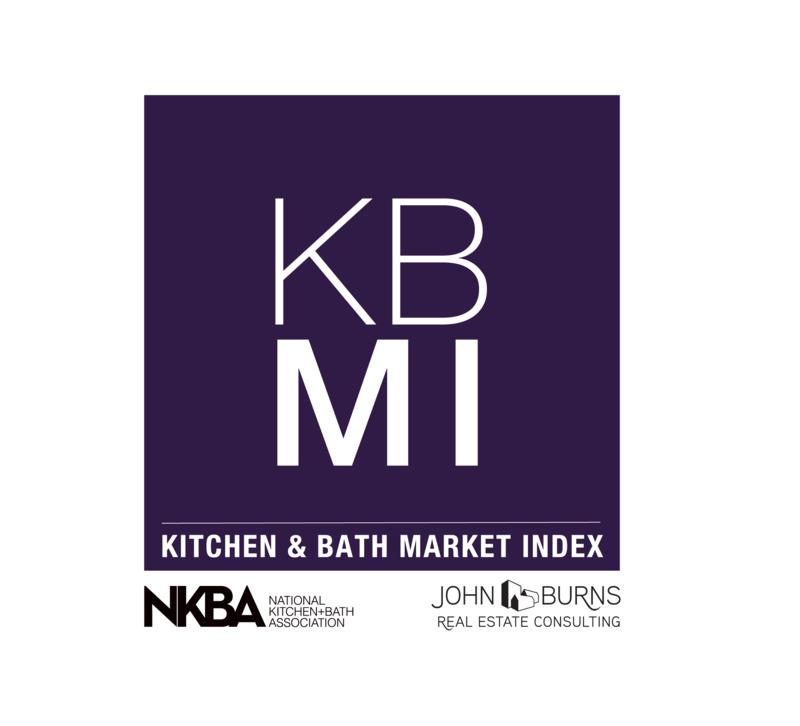The National Kitchen & Bath Association – a non-profit trade association for the kitchen and bath industry providing tools, research, certification, and events to thousands of professionals – and John Burns Real Estate Consulting (JBREC) have released their quarterly Kitchen & Bath Market Index (KBMI) for the second quarter of 2021. With estimates showing an 11 percent growth in sales for Q2 vs. Q1, the report suggests continued growth in the Kitchen and Bath market, despite ongoing material shortages and rising labor costs.
“We’re encouraged by the findings from our report on the Kitchen & Bath industry, which reaffirms the longer outlook of the field as one of growth and strong earnings,” said Bill Darcy, NKBA CEO. “While we are seeing the continued delay of materials and increase in labor costs causing problems and concerns within the sector, it also shows that the sky-rocketing demand for remodeling projects has continued. In fact, the industry is experiencing an increased interest in higher-end products as consumers are spending more time than ever in their homes due to the ongoing pandemic and are prioritizing comfort and luxury, particularly when it comes to kitchen and bath improvements.”
The COVID-19 pandemic has continued to have significant impact on the supply chain and material development industries, causing widespread challenges to all sectors of the economy. The Kitchen & Bath industry is no different as the field has seen “double-digit” price increases across common kitchen & bath products, while labor rates have increased an additional 10 percent to 19 percent in an effort to retain talent within the industry. All of these factors have put strain on the consumer budget.
Despite these hurdles, there is a clear demand for remodeling services as 60 percent of designers have reported a backlog of at least three months. Additionally, in Q2 2021, 55 percent of the building and construction industry reported zero projects canceled, a stark contrast from the previous quarter. Furthermore, despite an increase in material costs, nearly half of retailers (46 percent) have begun to see a shift in typical price points demanded by customers with 89 percent saying their customers are shifting toward the pricier, higher end finishes.
Kitchen & Bath Market Index key findings:
Labor Challenges Persist: As the qualified labor pool continues to shrink with early retirement and career changes, building and construction companies scramble to incentivize their current workforce. Eighty percent of companies report increasing labor rates to retain employees – with nearly two-thirds report rising rates of as much as 19 percent. This continues to increase the overall price of the project and delay the timeframes of planned remodels. However, clients continue to move forward with projects and are willing to pay for products and finishes in demand.
COVID-19’s Impact Lessens: While industry experts and professionals keep a watchful eye on the progression of the Delta variant of the coronavirus, members reported a significant drop in the pandemic’s impact on business, giving it a score of 4.9 out of 10, where 0 is no impact at all and 10 is a significant impact – down significantly from around 6 the previous three quarters.
More Record Indices: An 82.3 overall KBMI score topped the previous all-time record 79.8 from Q1. Current conditions of 85.7 shattered last quarter’s record 78, and is miles ahead of the 59.8 from Q4 2020. Future conditions are flashing warning signals though, as price hikes and lead times are beginning to take a toll. Many members are becoming creative, ordering months in advance to circumvent lead times and lessen the sting of price hikes.
While there is optimism about the future of the industry, there are still a few challenges the industry continues to face including the potential threat of the Delta variant of the coronavirus. However, the outlook toward the industry’s future is positive as consumers are content to wait out and postpone projects rather than cancelling all together, signaling continued growth for the sector as the year progresses.







